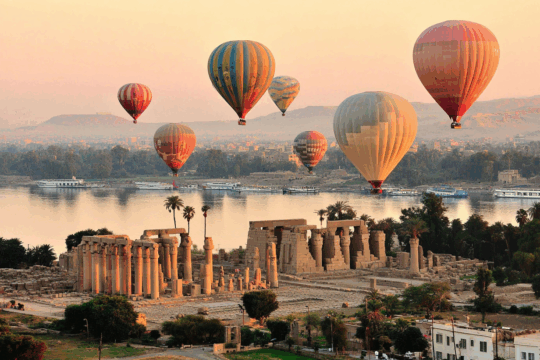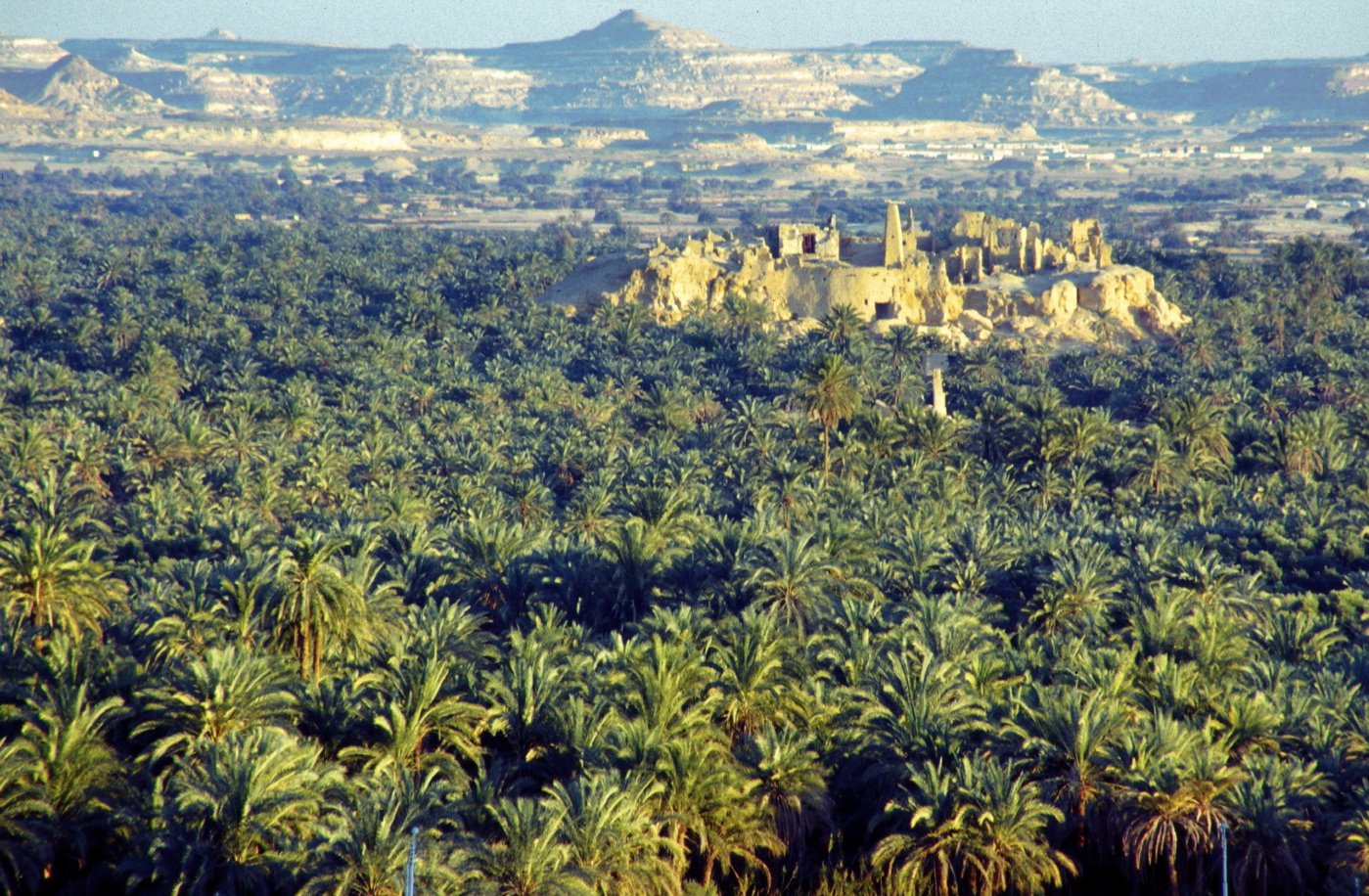
Siwa Oasis is a hidden gem deep in the western desert of Egypt and is home to magnificent ecological wonders and a long heritage. Over 7800 square kilometers of the unspoiled desert environment make the protectorate of Siwa an ideal destination for any adventurer. Siwa has established a protectorate in 2002.
The lofty Shali Fortress, which affords spectacular views of the surrounding surroundings and has important historical and cultural value, is a particular focus of attraction in Siwa Oasis. Shyata Lake, a salt lake in the center of this vast oasis and an infrequent halt for migrating Flamingo Birds, is another not to be missed inside the protected region. The Dorcas gazelle may be observed bounding over the arid terrain in the nearby locations.
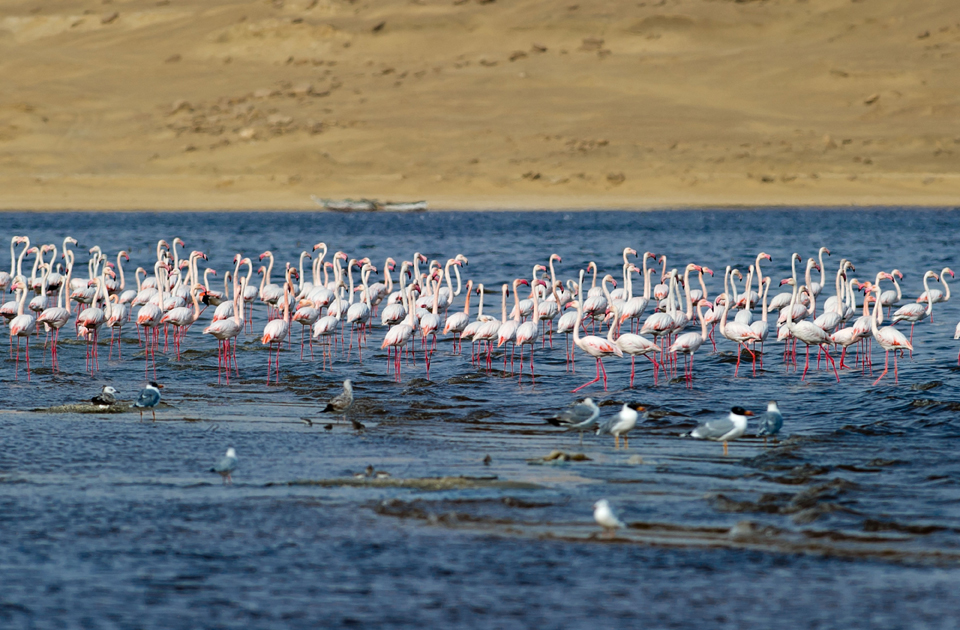
Wildlife Wonders of Siwa Oasis and Natural Marvels
Palm and olive trees border Siwa’s beautiful terrain, which spans a vast area, Siwa is well-known for its native date and olive production procedures. Siwa also has Egyptian Acacia trees and the fire-resistant Tamarix Flowering Plant species. Siwa’s vibrant natural ecology is home to a variety of fascinating bird species, as well as uncommon animal breeds such as the Dorcas Gazelle, Slender-horned Gazelle, and Striped Hyena.
This desert habitat also supports fox species such as the diminutive Fennec breed and the distinctive Red Fox. Saharan Horned Vipers, which congregate in oases, may be seen in Siwa, distinguished by their distinctive horns placed over their eyes.
The Local Tribes of Siwa – History and Traditions
The original North African Berber culture is practiced to the east by the Amazigh tribespeople. Amazigh people claim to be descendants of the Hamudat faamily, with Arab, Berber, and Sudanese ancestors. Pottery, embroidered textiles, wicker goods, and the Amazigh’s famous salt lamps and candles are among the crafts produced in this area. Ultimately, Siwa attractions are overwhelming for visitors with the preserved culture and history of the place.
To get the most out of the local traditions don’t miss out on the area’s specialty, locally prepared date jam. Traditionally, the locals will serve a delectable Amazigh entrée of couscous and veggies, followed by famous regional drinks like lemongrass, green tea, or beebrush. One of the distinctive features of Siwa is the opportunity to interact with the local Amazigh people and learn about their rich culture.
 Visit Siwa during Eid El Solh (The Reconciliation Festival), an old festival that lasts three days and features a series of social gatherings, replete with the traditional cuisine of camel meat, rice, and bread. Did you know that the Amazigh tribespeople has their own unwritten Berber dialect? Discover this and more on your once-in-a-lifetime visit to the spectacular Siwa.
Visit Siwa during Eid El Solh (The Reconciliation Festival), an old festival that lasts three days and features a series of social gatherings, replete with the traditional cuisine of camel meat, rice, and bread. Did you know that the Amazigh tribespeople has their own unwritten Berber dialect? Discover this and more on your once-in-a-lifetime visit to the spectacular Siwa.
Siwa Traditional Houses and Building with Karshef
Siwa Oasis is well-known for its breathtaking environment as well as the traditional structures made of mud brick. Yet, environmentalists believe that Egypt’s Siwa oasis is in danger because local people are increasingly building with contemporary materials rather than the saline rocks known as “Karshef” that are found locally.
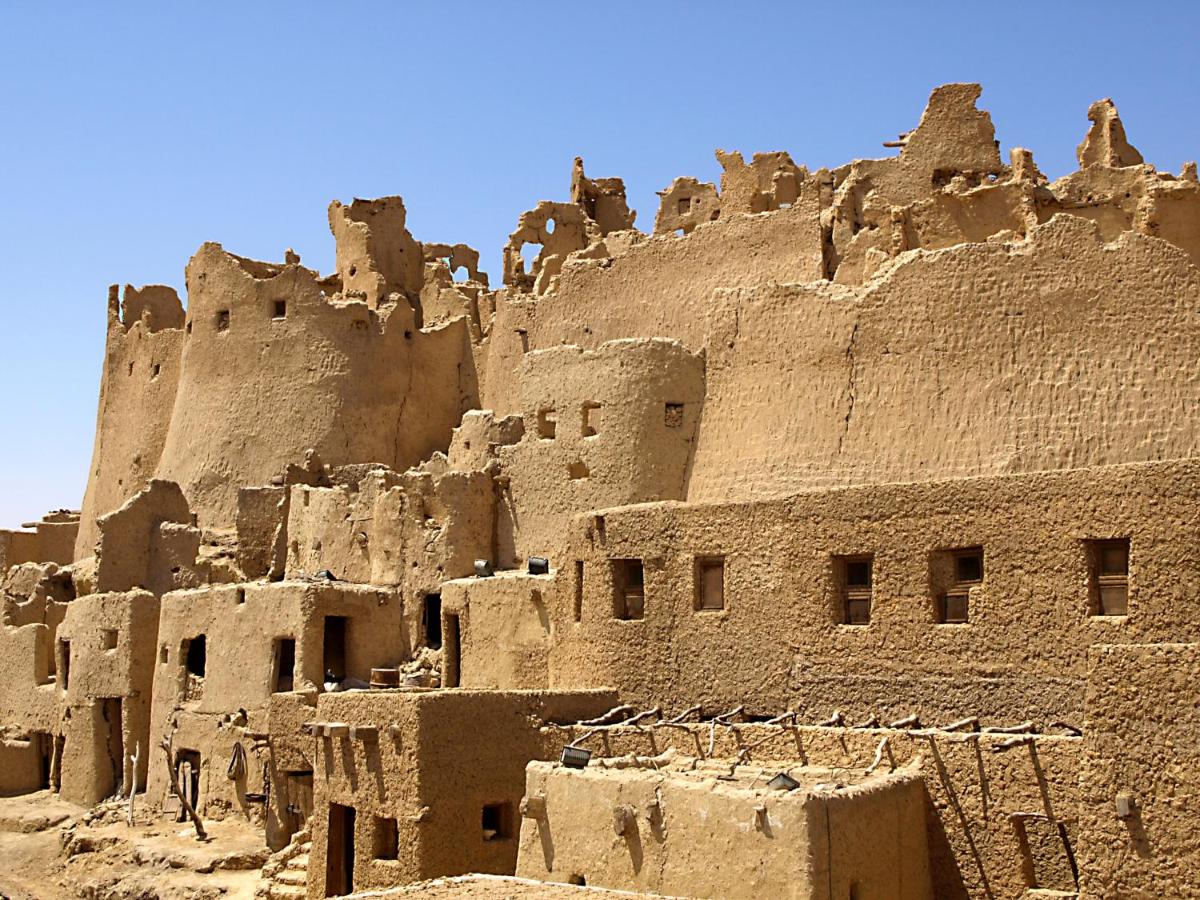
Karshef, which is made up of fossilized salt that settles on the shores of Siwa’s salt-water lakes, is combined with mud and water and used in the construction of low-rise buildings with thick walls and shallow foundations. Karshef is made up of fossilized salt that settles on the shores of Siwa’s salt-water lakes. The only additional materials that are utilized are palm thatch for the roof and wooden beams, which are used for the ceilings.
Karshef structures are required to be erected in stages, with each portion measuring almost half a meter in height being allowed to dry for a week prior to the addition of the subsequent layer. Building a home with one story takes around nine months, whereas building a house with two stories takes approximately twelve months.
Despite the fact that the thick walls of the structures keep them warm in the winter and cool in the summer, living in Karshef housing may be rather uneasy and not applicable to modern times. Sand is easily blown off the walls by even the slightest wind, and sinking is a typical occurrence.
The soil is becoming wetter as a result of the increasing drilling of wells by farmers and commercial water-bottling enterprises. This is causing the soft Karshef buildings to sink because of the additional weight.
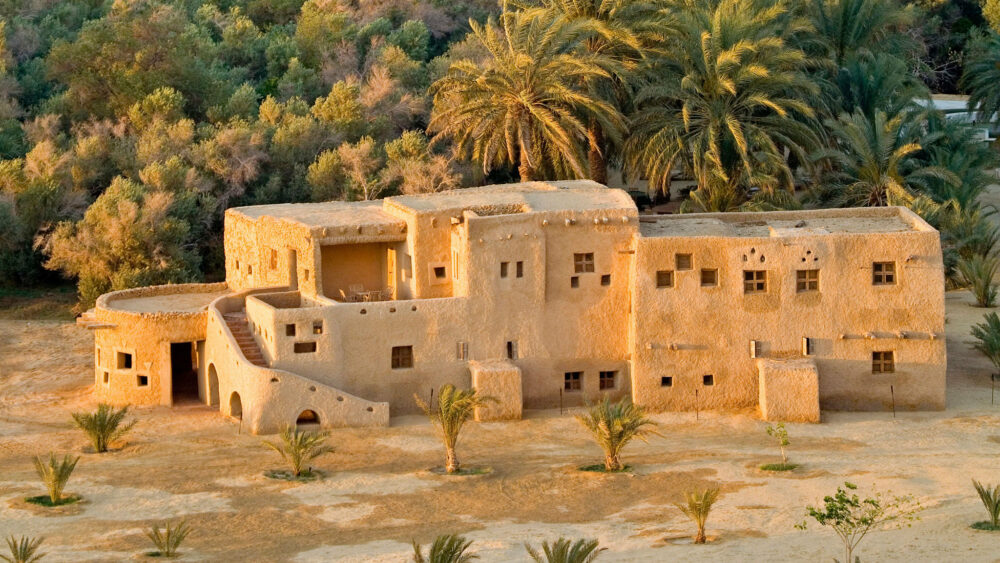
Some of the most common difficulties with keeping the traditional method are the lack of skilled builders, the slow process of building, and last reason is climate change as the soil has gotten more humid although it did not have any humidity previously. The result of this was that people stopped using Karshef and began constructing with stone. Nowadays, individuals do not learn how to build with Karshef; instead, they study the current methods.
The History of Shali Houses
Siwa’s downtown, also known as the Shali, is a beautiful historical jewel that was first settled in the Middle Ages. It’s great for window shopping since it’s brimming with cute cafés, stores, and boutiques to explore. In 1203, the Shali was established as a stronghold to defend the locals from raids; it is made completely of a special blend of salt and clay. A different name for it is “city of muck.”
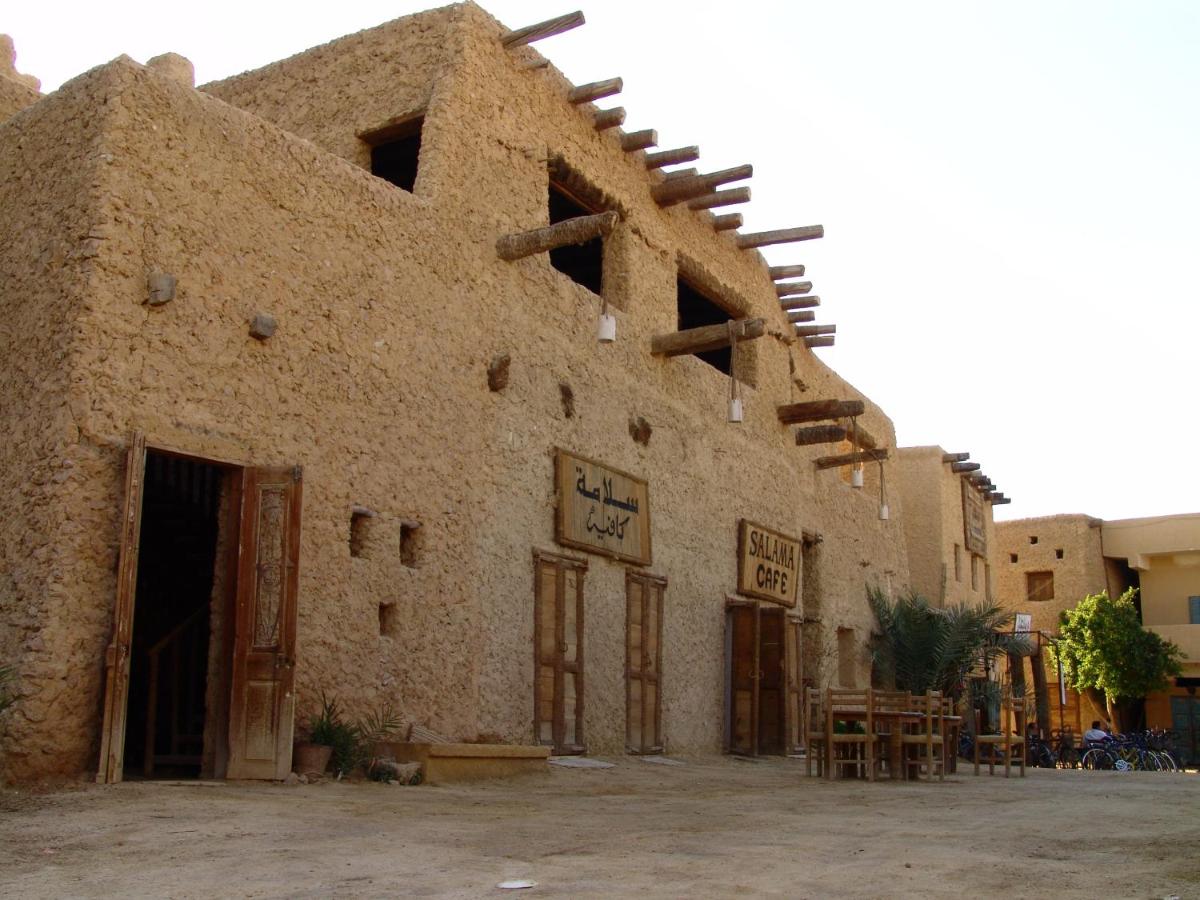
Within the Shali, houses are protected from the heat of the summer and the chill of the winter. They’re not very water-resistant, however. In 1926 and again in 1930, heavy rains caused structural damage and prompted many to flee. Many initiatives have been underway in recent years to repair ancient buildings.
Protecting the architectural history of the oasis is one of the most pressing concerns for people who want to preserve the Oasis’s heritage. The architectural tradition of the Siwa oasis is one of a kind. This is making it one of the most distinctive examples of its kind anywhere in the world.
However, the main issue know that people started to build houses and commercial buildings with steel and cement due to the lower cost and faster process. Sadly, in recent years, only a limited number of Siwa people have been interested in preserving the old method of building.
Envorimental Initiatives
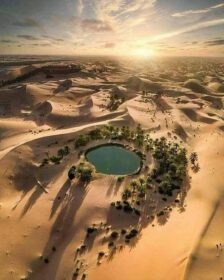 Lodges and hotels are highly investing in preserving the oasis heritage and some of the most famous hotels are built using traditional methods. At Holiday Tours we took the responsibility to promote green tourism in the oasis. As a leading travel agency in Egypt, we provide support to local communities and arrange awareness sessions and environment-friendly activities such as biking tours in the oasis, shopping from the locals, and accommodations at local eco-lodges.
Lodges and hotels are highly investing in preserving the oasis heritage and some of the most famous hotels are built using traditional methods. At Holiday Tours we took the responsibility to promote green tourism in the oasis. As a leading travel agency in Egypt, we provide support to local communities and arrange awareness sessions and environment-friendly activities such as biking tours in the oasis, shopping from the locals, and accommodations at local eco-lodges.
Environmentalists believe that if the government does not intervene enough to preserve the nature of the oasis. The Karshef that is drawn from the local area would soon be utilized for nothing more than the construction of vacation houses for tourists. However, lately, the Ministry of Environment created technical assistance programs for eco-lodge owners and managers, as well as an eco-tourism product development initiative in Siwa Oasis. The programs seek to incorporate biodiversity into tourism in order to promote sustainable tourism and environmentally friendly tourist growth in Egypt.


